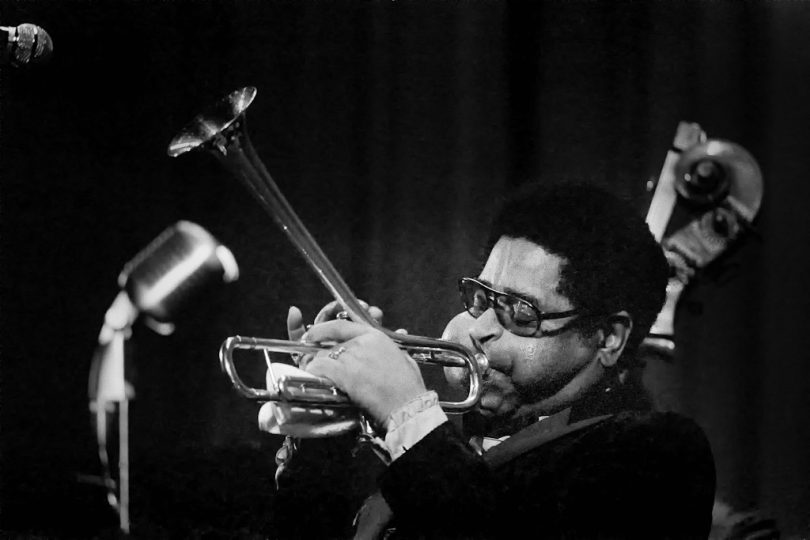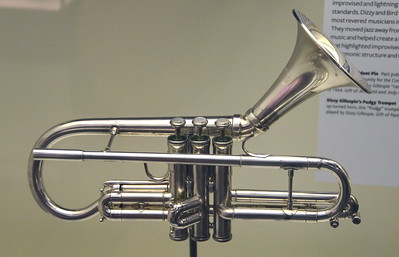Why Was Dizzy Gillespie’s Cheeks So Big
Dizzy Gillespie, originally known as “John Birks Gillespie” was the trumpet player with big cheeks. He was one of the pioneering figures in the development of jazz and one of the revolutionary figures in the development of bebop.
He was a trumpeter who was famous for his signature move, which was to blow air into his cheeks.
Gillespie was known for many things. He mastered the piano and the trombone before he learnt to play the trumpet. Gillespie was not only a musician, but also a bandleader and songwriter. Because of his hilarious antics on stage, people began to call him “Dizzy.”
Dizzy Gillepsie’s Music Career
After two years of studying music, Dizzy moved to Philadelphia in 1935 and joined the Frank Fairfax Orchestra, as well as orchestras fronted by Edgar Hayes and Teddy Hill.
It was with Teddy Hill that he made his recorded musical debut with a song titled “King Porter Stomp.” He also joined orchestras fronted by Teddy Hill and Edgar Hayes after moving to Philadelphia in 1935. During his time spent performing with Fairfax, he was also given the nickname that would become his signature throughout the rest of his career.
It is not entirely clear why his bandmates began referring to him as Dizzy, but the majority of origin stories point to his peculiar habits, such as carrying his trumpet around in a paper sack, as the reason for the name. He also has a general fondness for clowning around.
On the other hand, a purported spitball could have been the final straw that broke the camel’s back. In 1939, Cab Calloway engaged Dizzy Gillespie to play with his Orchestra, which was the house band at the Cotton Club, which was the most popular jazz club in the country at the time.
It was a dream gig, but two years later, Calloway famously fired Gillespie right there on stage after accusing the trumpeter of blowing a spitball at him. It happened after Gillespie was accused of blowing a spitball at Calloway. The argument escalated into physical violence, and it culminated in Gillespie slashing Calloway in the leg with a pocket knife.
Gillespie’s tenure with the Cab Calloway Orchestra came to an end with that incident; nevertheless, by that time, he no longer needed their services. He left the band after two years having established a network of contacts that would allow him to continue his career for the rest of his life.
Additionally, it was around this time that Gillespie first came into contact with a stunning young dancer by the name of Lorraine Willis. Willis was not interested in the young guitarist when they first met in August of 1937, but Gillespie’s dogged pursuit paid off in the end.
Not only did he persuade her to go out with him, but three years later, he also encouraged her to marry him. Willis put an end to her career as a dancer in order to run Gillespie’s business, and the couple remained married until he passed away in 1993.
An affair that the Gillespies had with the Juilliard-trained songwriter Connie Bryson resulted in the birth of a daughter, the well-known jazz singer Jeanie Bryson, in 1958. The Gillespies never had any children of their own.
When the younger Bryson sued Gillespie’s estate in 1998, court documents dating back to 1965 in which Gillespie admitted to being her father were made public for the first time. Prior to this, Gillespie’s secret family had been kept hidden from the media and his fans.
Why Was Gillespie Cheeks Big?
Since he taught himself, he never received instruction on how to properly hold an embouchure. Because of this, his facial muscles and tissue were disfigured as a consequence of years of playing incorrectly, which causes them to become weaker over time and can make it more difficult to play.
What’s Peculiar About Gillespie’s Cheeks?
Gillespie’s distinctive style of delivery was most easily recognisable by the “bullfrog-like” manner in which he puffed out his cheeks and neck to blow into his instrument.
While it was a marvellous spectacle, it has also become a subject of physiological study among two schools of taught.
One believe that Gillespie was born with abnormally large air sacs adjacent to his larynx called laryngoceles. These air sacs pump up in response to an increase in pressure in the mouth and throat.
On the other hand, the other school of taught believe Gillespie developed these abnormally large air sacs as a result of years of intense practise that stretched his buccinator muscles, causing deformations.
It is not as rare as you might think; medical professionals refer to it as “glassblower’s sickness” since it is so prevalent among those who work in the glassblowing industry.
Why Does Dizzy Use A Bent Trumpet?
Aside known from being the trumpet player with big cheeks he is also known for his use of a bent trumpet. Dizzy Gillespie was known for playing a “bent” trumpet, which became his signature instrument.
As opposed to the typical design, which has the bell pointed in front of it at a 90 degree angle, this one had a bell that was bent weirdly upward
As described in Gillepsie’s autobiography, his twisted trumpet was a result of an accident that occurred on stage during a Stump & Stumpy dancing performance on his wife Lorraine’s birthday (January 6th, 1953).
Regardless of the fact that his trumpet had been disfigured, Gillespie liked the impact that the bending had on his instrument, which was an alteration in tone brought about by the constriction. The following day, he got the malfunctions with the trumpet fixed, but he was unable to forget the tone.
Since then, Gillespie has used an upturned trumpet because he asked Martin Committee to create him a “bent” trumpet based on Lorraine’s drawing. Gillespie’s request was granted by the Martin Committee, and ever since then, he has been frequently spotted playing a trumpet with a bent neck.
Why Do Trumpet Players Puff Their Cheeks?
Trumpet players puff their cheeks to make up for their improper breathing techniques. When the lips are so stressed, or they’re unable to master how to embouch with the lips, trumpeters resort to puffing their cheeks. This is especially particular to newbies.
It is important for trumpet players to keep their cheeks from puffing up and to prevent air pockets from forming behind either their upper or lower lips. Otherwise, they will put so much strain on the buccinator muscles, which is rumoured to cause the condition known as glassblower’s sickness.








